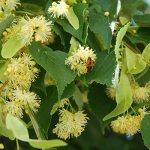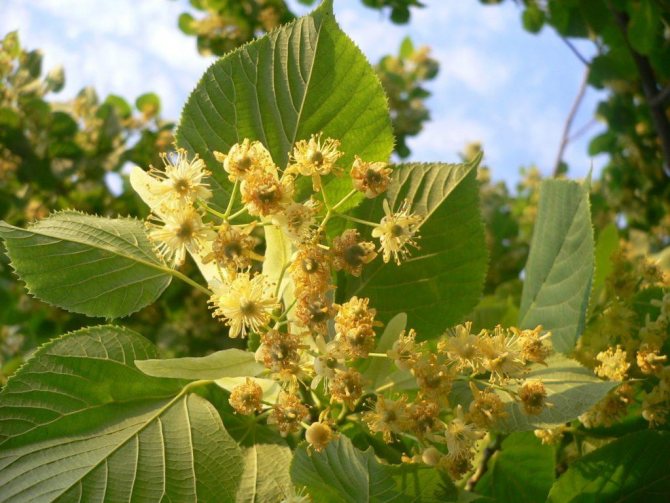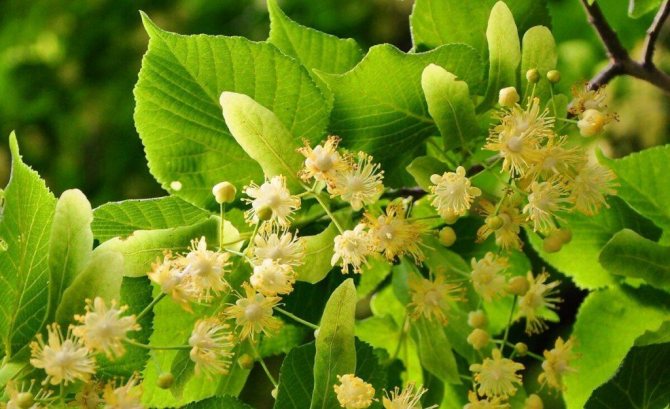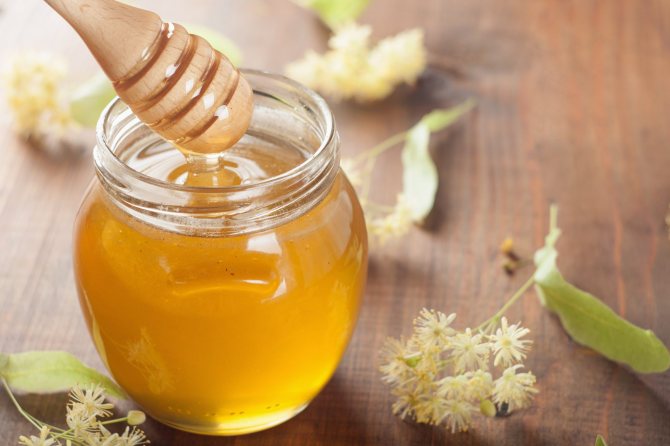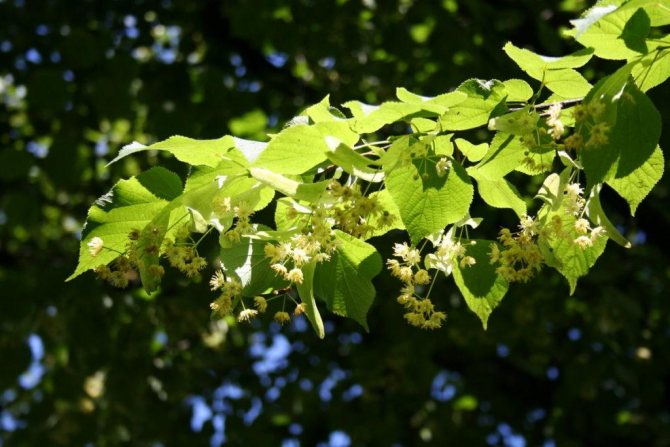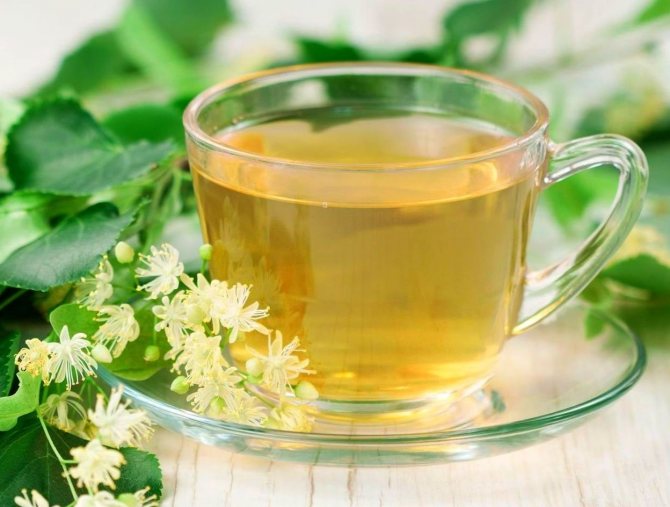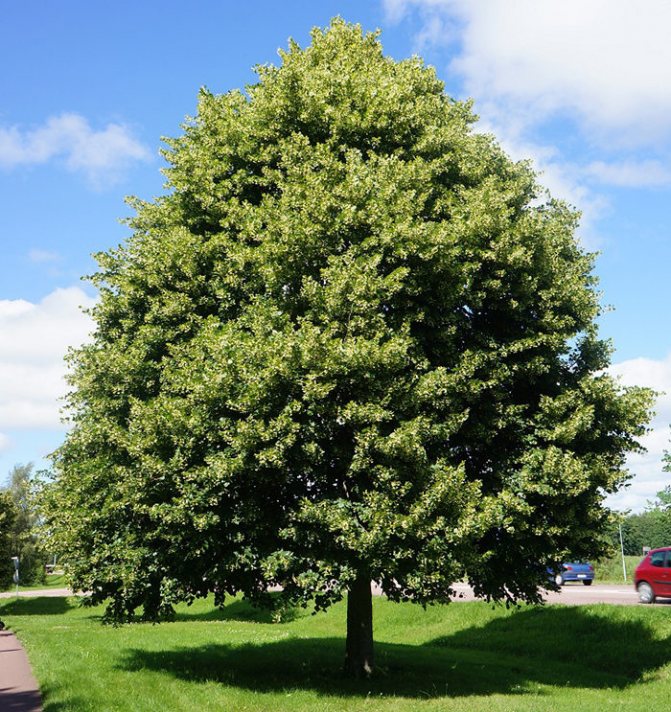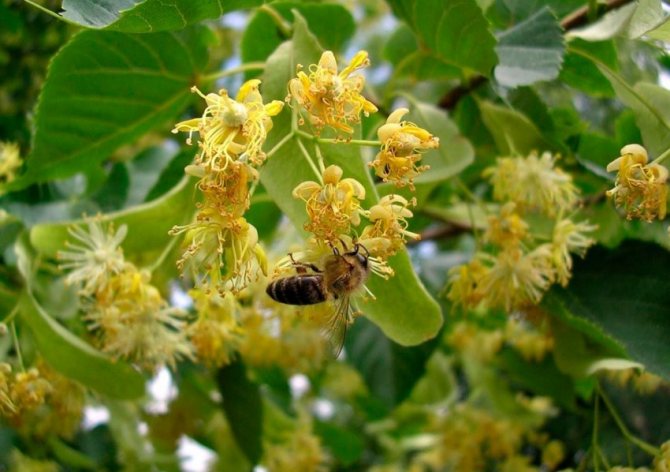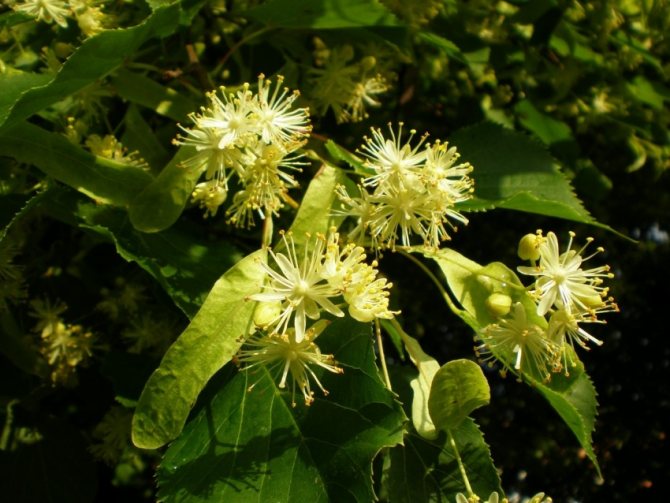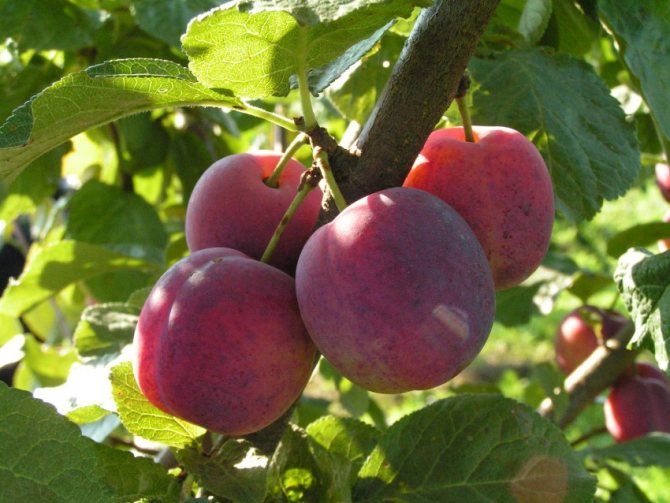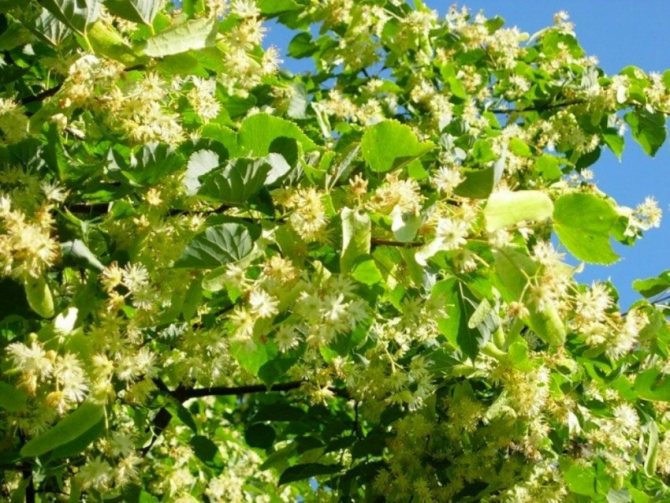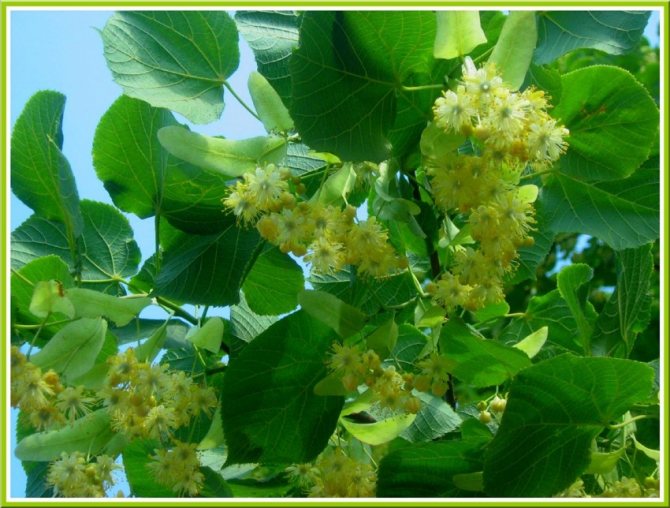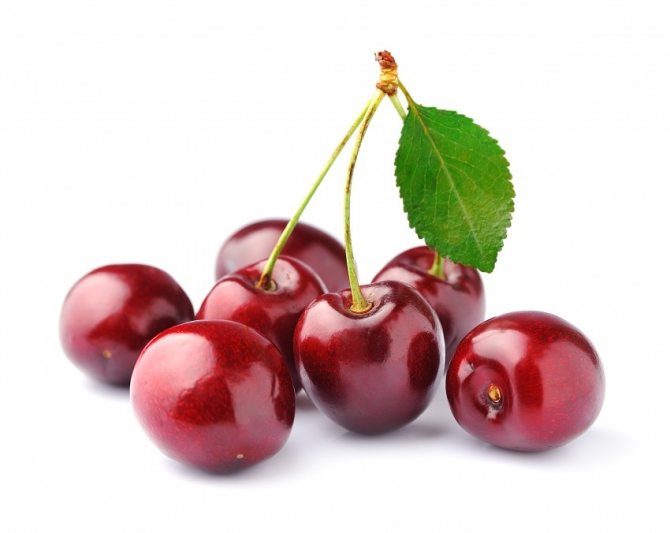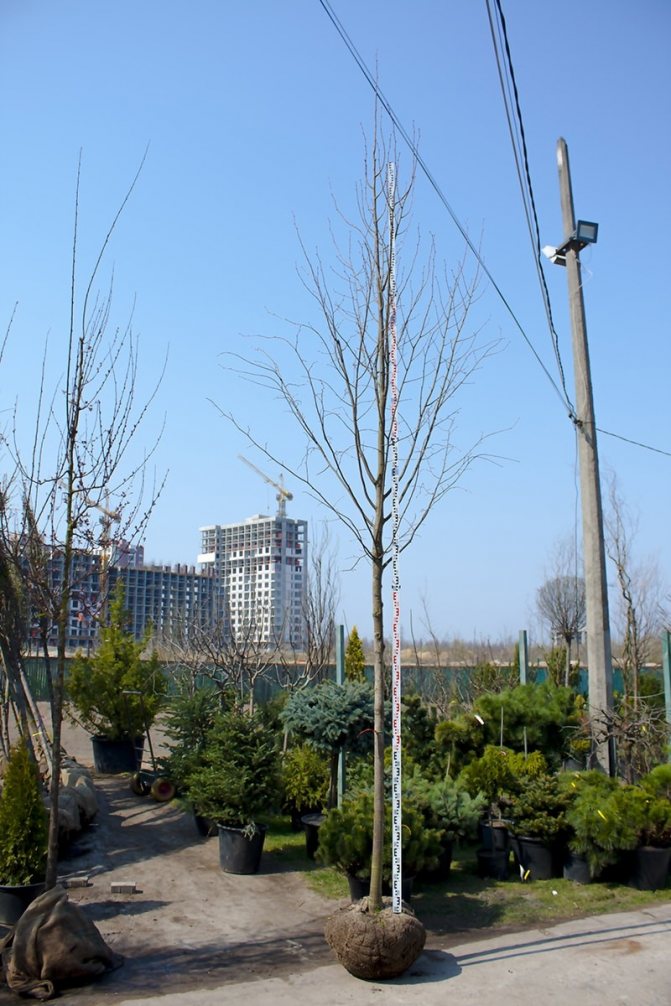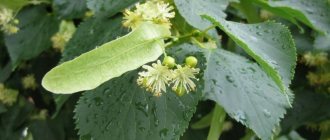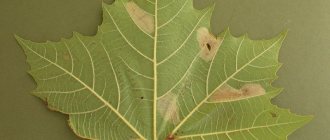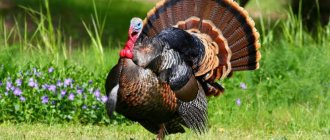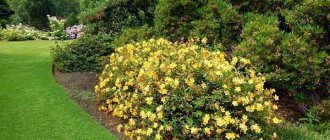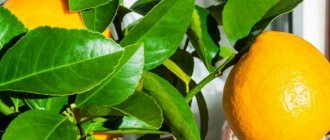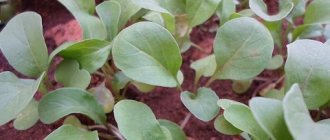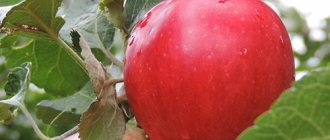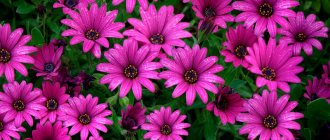The linden tree in our squares and parks is found no less often than maples, birches and poplars. It is appreciated for its unpretentiousness, exceptional longevity, thick silky crown. The whole plant, from flowers to wood, is of immense benefit. Inflorescences, bark, buds and bracts are valuable medicinal raw materials, not a single Russian steam room can do without a linden broom, eco-friendly dishes, bast, and burlap are made from durable bast.
Right among the trees, this green beauty is considered a real treasure. Plus, it's easy to grow it yourself. In a word, the linden itself asks for under our windows. It remains to learn the intricacies of planting and caring for this amazing plant.
In the old days, seals were made of metal, which was expensive and difficult to process. Craftsmen began to forge them, carving blanks from the soft and pliable linden tree. Since then, a “phony” label has been firmly stuck to all fakes.
Description of the plant

Lindens are large deciduous trees up to 40 meters high. It's nice to see what a linden tree looks like: a dense, beautiful, dense, easily molded crown, pleasing to the eye. Linden leaves are simple, alternate, shaped like a heart, with notches along the edge, pointed. In addition to a beautiful crown, linden has fragrant flowers, lemon shade, collected in corymbose inflorescences.
Linden blooms for two weeks in July. The tree blooms in natural conditions at the 20th year of life, and in plantations - only after 30 years. At the time of flowering linden, the air is filled with a light delicate honey aroma, which is felt far beyond the linden gardens and parks.
Linden fruits are single-seeded nuts. The seeds are tiny, the size of a pea. Fruits-nuts are collected in several on separate stalks. Each such stalk is equipped with a special winglet, thin and rather wide. This winglet helps the seeds fly over long distances. It is easy to remember what a linden tree looks like, it can always be distinguished from other trees. In summer, on heart-shaped leaves, in early spring on crimson young twigs with buds, silky bark. The root system of trees is strong and deep.
Plants can reach a respectable age, but to the question: "How many years does linden live?" There is no definite answer. Linden trees are known, which are up to 800 and even 1000 years old. In the forests where linden grows, other plants also thrive, since the falling linden foliage is a nutritious fertilizer. In addition, linden is a well-known melliferous plant. Linden honey is considered one of the best.
Distribution [edit | edit code]
Representatives of the genus are common in the temperate and subtropical zones of the northern hemisphere. A particularly wide variety of linden species is confined to Southeast Asia. For example, there are 15 endemic species in China alone. In the temperate zone of Europe, Asia and North America, linden is less represented. It grows best in warm and fairly humid regions, such as western Transcaucasia, the south of the Far East - Primorye; in North Asia, as a relic of the Tertiary, preglacial age, it is found in continental regions remote from the oceans - the south of Western Siberia and the Krasnoyarsk Territory. The natural area is the entire temperate zone up to 60-66 ° N.(the northernmost natural places of linden in the world - in Norway - at 66 ° N) [6] [7]. It is widely used in landscaping cities and villages.
Content with very diverse soils, but prefers rich. Easily propagated by seeds and vegetatively.
Types and varieties
There are about 45 species and over 100 hybrid varieties of linden. The most common: heart-shaped linden or small-leaved linden, large-leaved linden, Amur linden, felt or fluffy linden, Siberian linden, European linden, bush linden.
American (black)
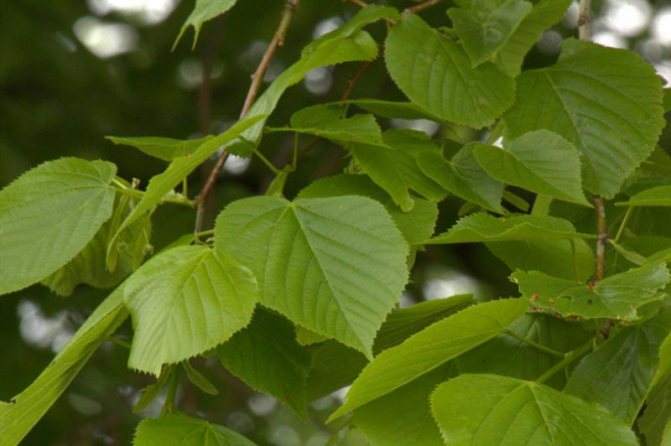

American linden
American linden or black linden is a thermophilic tree up to 40 meters high. The crown is wide, oval, the bark is inky black. Leaves are oval, wide, up to 20 cm long, cordate at the base, with notches along the edges. The flowers are large, collected in drooping inflorescences of 6-15 pieces, up to 1.5 cm in diameter. Representatives of this species grow rather slowly.
Amurskaya
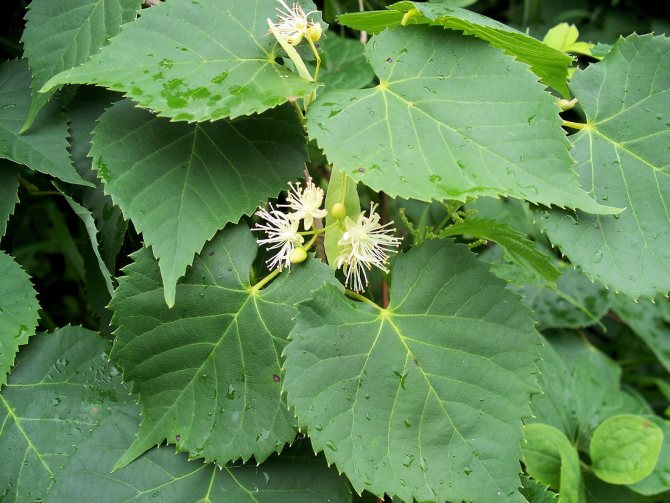

Amur linden
Amur linden is a graceful tree up to 30 meters high. The crown is dense, compact, oval in shape. The bark of young plants is glossy, brown-purple, in adults it is dark smoky, in longitudinal cracks. The leaves are shaped like a heart, with grooves along the edges, up to 7 cm long. Fragrant flowers of a milky or lemon shade are collected in inflorescences of 5-15 pieces.
Yellowing "Glenleven"
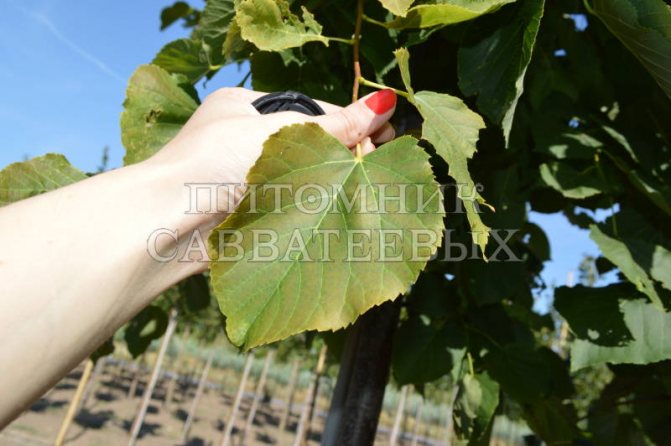

Yellowing linden
The yellowing linden is an ornamental tree up to 15 meters high, with a wide pyramidal crown. The bark is rough, smoky in color. The leaves are large, round-heart-shaped, olive-colored, with dark veins and purple-gold "dusting" on top. In autumn, the leaves take on a straw shade. Representatives of this species bloom profusely, with fragrant golden flowers. Linden grows quickly enough, prefers dry, drained soil. The tree loves sunlight, but is able to endure light partial shade.
To maintain the yellow linden crown in a picturesque state, it is recommended to prune at least once every five years.
Felt (Silver) or Fluffy


Felt linden
Felt linden or fluffy linden is a stately tree up to 30 m high. Crohn of regular shape, wide pyramidal or oval. The silvery linden has the main distinguishing feature: the leaves of the tree are rounded, up to 12 cm long, with sharp uneven serrated edges, dark olive on top, covered with a light down at the beginning of development, and white on the underside, covered with villi. In bright sunlight, the edges of the leaf curl slightly to reveal a silvery underside, creating an original contrast of dark green and silvery sheen. Closer to autumn, the leaves acquire a yellow color and remain on the tree until winter.
European


European linden
The European linden is a tree up to 40 meters high with a wide oval crown. The leaves are rounded, with a heart-shaped base. Representatives of this species grow rather quickly.
Caucasian
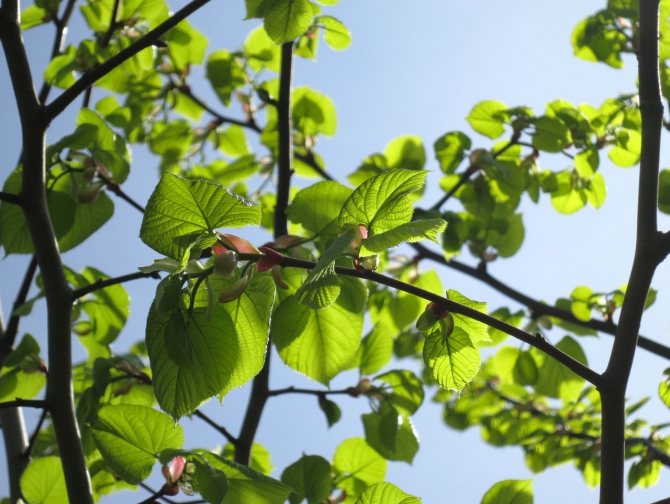

Caucasian linden
Caucasian linden is a tree up to 40 meters high, with a round or wide ovoid crown. Young shoots of Caucasian linden are purple-red. The leaves are large (up to 14 cm long), wide, oval. The upper side of the leaves is dark green, the back side is dark gray, with tufts of whitish hairs near the veins. Drooping inflorescences with light yellow flowers. Abundant flowering.
Large-leaved or flat-leaved
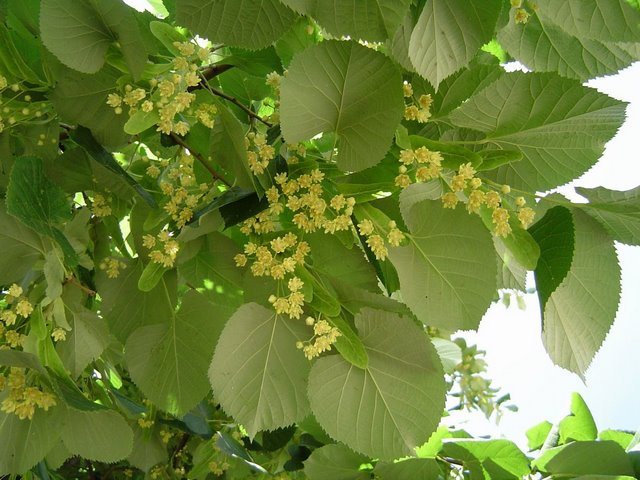

Large-leaved linden
Large-leaved linden (flat-leaved linden) is a tree up to 35 meters high and up to 20 meters wide. The crown of large-leaved linden is initially conical or wide, ovoid, later round. The main branches are vertical, the lateral shoots are horizontal. Broad-leaved linden has large leaves that bloom 14 days later than small-leaved linden, but pleases with flowering two weeks earlier.Flowers are lemon-milk, collected in inflorescences of 2-5 pieces.
Manchu


Manchurian linden
Manchurian linden is a tree up to 20 meters high. The crown is of the correct shape, rounded. Representatives of this species are similar to specimens of Amur linden, but differ in larger leaves and flowers. The flowering is beautiful, abundant.
Small-leaved (heart-shaped)
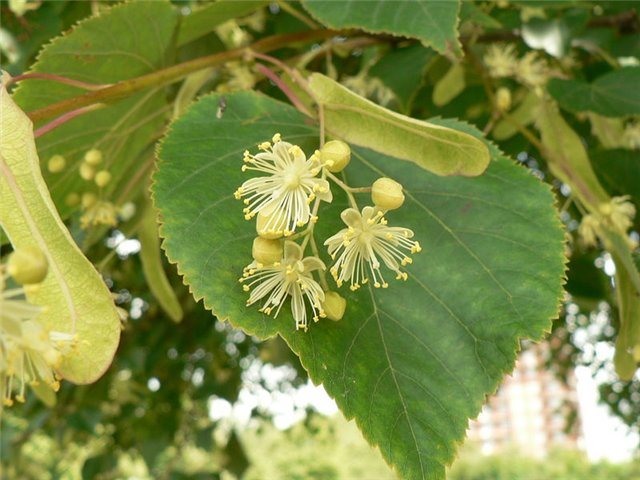

Small-leaved linden
Small-leaved or heart-shaped linden (tilia cordata) is a tree up to 30 meters high and up to 15 meters wide. The small-leaved linden has synonymous names: lutoshka, scrubber, lubnyak. The crown of the tree is initially conical, later ovoid. The main branches grow diagonally or vertically, the side shoots bend and hang down at the bottom of the crown.
The heart-shaped linden has green glossy, dark gray leaves with a serrate edge on the back. In autumn, the heart-leaved linden delights the eye with beautiful light lemon leaves. Young branches of representatives of the species are covered with satin bark, old ones - with deeply cracked bark of a smoky gray color. The flowers are fragrant, with bracts, light straw color, collected in semi-umbrellas. The fruit is a nut with one seed. Blooms in July; fruits ripen in October. One of the common varieties of this species, bred specifically for urban landscaping, is the small-leaved lime tree Greenspyer.
An advantageous feature of the Greenspair variety is that the representatives of the variety grow in height two times less than the species small-leaved linden. They have a more compact and dense crown, better tolerate low air and soil moisture.
Ordinary


Common linden
Common linden is a graceful tree up to 40 meters high, a natural hybrid of small-leaved linden and large-leaved linden. The crown of the tree is wide, shaped like a pyramid. The flowering time begins in July.
Siberian


Siberian linden
Siberian linden is a tree up to 25 meters high. The bark of old trunks is dark and cracked. Young shoots are dark purple or brown-amber, glabrous, with small rounded lenticels. The tree blooms in the second half of July, flowering duration is two weeks. Linden honey is light, almost white, with a delicate aroma of linden flowers, of excellent quality. Belongs to the best varieties. Differs from others in late flowering and high winter hardiness.
Japanese


Japanese linden
Japanese linden is a tree up to 20 meters high. Grows in East Asia, in deciduous subtropical forests. Young bark is smooth, brown, old with grooves, dark. The crown is high, compact, oval in shape. The leaves are small, 5-7 cm, oval, olive on the outside, gray on the inside, with hairs in the vein corners. Flowering occurs in July or August for 14 days. The flowers are tiny, in large numbers collected in drooping inflorescences. Fruits, ripening by September, are round, even, nuts covered with fluff. Representatives of this species grow rather slowly. The species is frost-resistant, it is an exclusively melliferous plant. Japanese linden tea has proven itself as a flavored green tea.
Wood
The massif is represented by an equally dense sapwood of a pale yellow or pinkish color. The texture is weak, the natural pattern is a bit like birch. The gloss of the surface is soft, slightly matte.
The quality characteristics of linden wood are slightly lower than those of pine or oak. The overall drying coefficient is 0.58. During the preliminary drying process, the wood almost does not warp and does not crack due to the uniform saturation with moisture. The density of dry sawn timber is about 450 kg / m³. Linden has low strength and resistance to mechanical stress, similar to aspen wood. It is prone to swelling, does not hold nails and staples well, and is prone to rotting and fungal attack.
The advantages of linden are plasticity and ease of processing: the material bends well, is cut, sawn, impregnated with coloring agents and stains, glued and polished.
Linden has long been used to build barns, made hives, chests, chests, barrels for pickling cabbage, vats for winemaking, made kitchen utensils: scoops, ladles, spoons, pots. Bast was especially appreciated: bast shoes were woven from young bast, matting was knitted.
Today linden is used in furniture and turning production, toys, pencils, blanks for decoration are made from it. Linden lining is used for sheathed saunas and baths, shelves are made of boards. Due to its low thermal conductivity, this wood reduces the likelihood of burns when touched in a hot room.
Linden
(lat. Tília) is a genus of woody plants. It unites about forty-five [3] species of trees and large shrubs, as well as over a hundred hybridogenic species. Since the time of Karl Linnaeus, more than 350 species have been described [4], many of which were later brought into synonyms for the existing taxa.
According to the classical Kronquist classification system, the genus is included in the Lipov family (Tiliaceae
), but according to the results of modern genetic studies, this family in the APG II classification system was included in the rank of a subfamily in the Malvian family (
Malvaceae
).
Care
Linden lives longer if you follow some rules for caring for it. Trees can suffer from drought, so regular and proper watering is very important in hot, dry summers.
After planting the seedlings of the plant and during the first two years of their development and growth, it is necessary to apply nitrogen fertilizers to the soil.
The crop can withstand shade, so it can be planted in secluded areas of the garden.
Trees grow well on fertile, well-drained soils, do not tolerate soils with accumulated harmful salts, thrive better on lands with lime (from neutral to alkaline). The root system of the plant is sensitive to compaction.
Trees withstand frost, quickly adapt to changing climatic conditions. Trees are cut a year after planting, in the spring, shortening by 1/3 to form side shoots, and in the fall the overgrown linden is trimmed. The culture reaches full development only by the age of 20-40.
Bloom festival
Flowering occurs in the summer months (end of June - July). The flowers are medium-sized, in numerous corymbose inflorescences, each of which has a well-pronounced bracts resembling a wing. It is leathery, colored in light green or yellowish tones, turns brown in the fall.
Linden flowers, although small, are quite attractive. Their petals are yellowish-whitish; stamens are numerous, well-developed, surrounding the central pistil.
Lush flowering linden trees seem to be covered with golden foam, behind which leaves are sometimes indistinguishable. But the main advantage of linden blossom is its wonderful smell. During the flowering period, lindens resemble humming hives. Bees diligently collect a rich harvest of nectar, which afterwards will turn into linden honey, fragrant in hot summer.
Diseases and pests
The plant is quite resistant to diseases and pests. Adverse growing conditions can provoke diseases. Diseases most often affecting the tree: perforated and black spot (control methods: burning fallen fruits and leaves as sources of infection, processing shoots with 1% Bordeaux liquid), white rot (copper-containing preparations are used to combat).
Pests that can harm a tree: bedbugs, scale insects, silkworms, gall mites, bark beetles, pipe beetle and others. To combat these pests, young plants are sprayed with insecticides.In addition to insects, birds and rodents can harm crops.
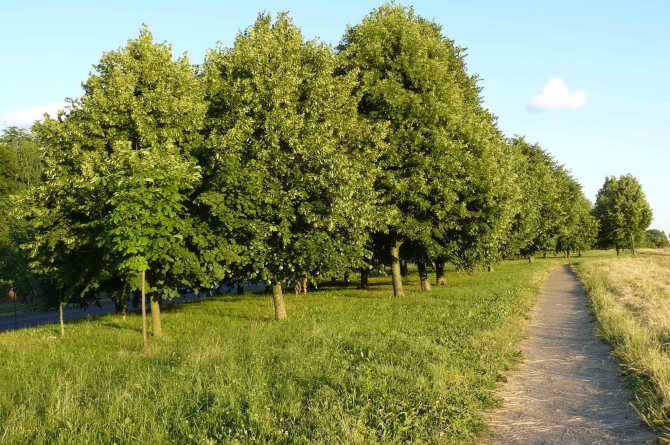

Planting linden
The tree propagates both by seeds and vegetatively (by layering, shoots, cuttings, grafting). For planting linden in hedges on the site, it is better to propagate it by layering.
Trees are planted in hedges in a line, wavy, checkerboard pattern. Saplings and crop seeds can be purchased at garden centers or ordered online.
From seedlings
Before planting, a decision should be made about the final location, height and shape of the tree crown. Too dense planting of plants inhibits their development, leads to the creation of an unfavorable microclimate with stagnant air, reduces the penetration of sunlight, and makes trees susceptible to the effects of diseases and pests. If you put the plant in water for a couple of hours before planting, it will better tolerate the lack of water during planting and the further growth process.
Before planting a seedling, the soil must be prepared in advance, fertilizing and hilling. It is necessary to check if the soil is too moist, if it is not frozen. Linden is quite patient with minor damage to the root system, but, nevertheless, planting is done carefully.
First of all, for seedlings, a planting hole is dug with a depth of at least 50 cm.When digging a planting hole, the volume of the root system is taken into account so that it is freely placed in the hole, and the lateral root branches do not break and are not pinched. It is recommended to remove the top fertile soil layer, set it aside separately from the bulk of the earth, so that at the end of the burying of the planting hole, lay it in its original place. The bottom of the planting pit should be well loosened with a shovel or pitchfork, then a layer of drainage is laid. It can be pebbles, rubble or broken brick.
Add compost, which is mixed with drill meal with superphosphate. In no case should fresh manure be introduced. Compost plays a significant role in the exchange of nutrients in the garden and is one of the best and cheapest sources of humus.
The compost is not suitable for non-rotting waste: various types of artificial materials, rubber, metal objects or glass.
Suitable for compost: shredded stems of herbs, cut branches of trees, bushes, bark. Use kitchen waste: peels and trimmings of vegetables, fruits, coffee grounds, crushed eggshells. Over time, the soil is depleted and, if additional organic or inorganic fertilizers are not applied, the fertility of the soil will be greatly reduced.
In the process of planting plants, sometimes you have to deal with a situation where the roots are firmly attached to the surrounding clod of earth. In such a situation, it is necessary to remove the dead or damaged parts of the roots, smoothly cutting them off from the main root system, shorten only those segments and branches that are too long and do not fit in the prepared hole. Before planting a lump on the roots of seedlings, it is necessary to water well. After that, a seedling is lowered into the pit, covered with a soil mixture: turf soil, humus, sand. The root collar of the seedling is placed at the level of the soil, it can be slightly lower. After planting, an irrigation circle is formed around the seedling with a 5 cm high embankment. A bowl-shaped hole around the seedling is covered with rotted manure or covered with a mulching layer. This will protect the soil from excessive drying out and provide the seedlings with nutrients. After planting, the plants are watered abundantly. After the earth has settled, it is recommended to strengthen the tree with a supporting wooden stake.
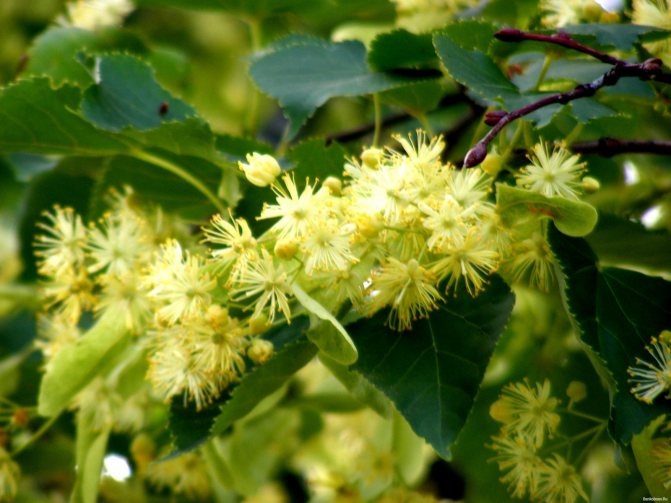

Reproduction by layering
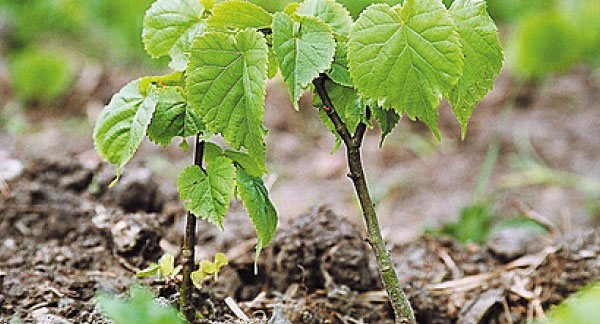

To obtain a stem cut in the spring, before the foliage appears, the lower branches should be bent to the ground, laid in shallow grooves and dug in. In approximately the same way, cuttings of currants and gooseberries are obtained. After 1–2 years, the branches will sprout, and a new plant will appear above the ground.It is chopped off from the maternal root with a sharp shovel and transplanted to a permanent place.
Reproduction of linden by root layers is even easier. Mature plants produce abundant growth, which is carefully removed from the parent tree and transplanted to a new location.
Linden is recommended to grow in areas near apiaries, as it is an excellent honey plant. Thanks to it, the productivity of bees and the quality of honey increase significantly.

